#sehzade orhan son of sehzade bayezid
Text







This set of a green gold kaftan and matching green and brown coat was first worn by Şehzade Mehmed in the twenty-eighth episode of the second season of Magnificent Century. Both appear again on Şehzade Bayezid in the twenty-fourth episode of the third season. They can also be seen on Şehzade Bayezid's son Orhan in the eighteenth episode of the fourth season.
The spin-off Magnificent Century: Kösem used both kaftan and coat on Şehzade Murad (later Sultan Murad IV) in the twenty-fourth episode of the first season.
The two items appeared again individually in three different shows. The kaftan can be seen on an unknown actor as a young Şehzade Orhan in the first episode of Mehmed The Conqueror, while the coat appears again on an extra in the seventh episode of the second season of Tozkoparan İskender as well another extra playing an Enderûn student in the seventh episode of the first season of Golden Apple: The Grand Conquest.
#Muhteşem Yüzyıl#Muhteşem Yüzyıl: Kösem#Magnificent Century#Magnificent Century Kösem#Magnificent Century Kosem#Fatih#Fatih (2018)#Mehmed: Bir Cihan Fatihi#Mehmed the Conqueror (2018)#Tozkoparan İskender#Kızılelma: Bir Fetih Öyküsü#Golden Apple: The Grand Conquest#period drama#costume drama#historical drama#Şehzade Mehmed#Sehzade Mehmed#Şehzade Mehmed (Son of Hürrem)#Şehzade Bayezid#Sehzade Bayezid#Şehzade Bayezid (Son of Hürrem)#Şehzade Orhan#Sehzade Orhan#Şehzade Orhan (Son of Şehzade Bayezid)#Şehzade Murad#Sehzade Murad#Murad IV#Şehzade Murad (Son of Kösem)#Orhan Çelebi#Orhan Celebi
12 notes
·
View notes
Note
I'd like to ask your opinion about Şh. Bayezid's child. Even reliable sources gave that his first son Orhan was born around 1543, which is impossible as Bayezid became governor of Konya in 1546. If he was born in 1546 then, how and why he bacame governor in 1558 just 12-13 years old? Isn't it strange? Is it possible Bayezid was asigned to Konya earlier or he maybe could have consorts before having province? Maybe during the 1543 campaign where he accomponied Suleyman he may had a concubine?
Regardless of Şehzade Orhan's year of birth, which is not established with certainty, 12-13 years old was an appropriate age to become governor of a province. In this Süleyman was following his predecessors' steps.
In 1412 the young sultan Mehmed I, fighting to reintegrate the empire after the debacle wreaked by Timur, assigned his twelve-year-old son Murad to Amasya, and a year later ordered the young prince, with the help of a trusted military commander, to quell a politico-religious rebellion that had already defeated one army sent against it. — Leslie P. Peirce, The Imperial Harem: Women and Sovereignty in the Ottoman Empire
Giovanni Maria Angiolello, part of Şehzade Mustafa (Mehmed II's son)'s retinue said:
When one of [the maidens] becomes pregnant by the Monarch, her salary is increased and she is honored and elevated above the others, and is served as a Lady. And if she gives birth to a son, the boy is raised by his mother until the age of 10 or 11; then the Grand Turk gives him it sanjak [a province] and sends his mother with him.... — Leslie P. Peirce, The Imperial Harem: Women and Sovereignty in the Ottoman Empire
Indeed, we know that Murad III - born exactly in 1546 - became governor of a province in 1558, at the age of 12:
When Selim came to the throne, his son Murad, twenty years old, had held the post of provincial governor for eight years. (In 1558 Süleyman had assigned signed provincial posts to two grandsons, Murad and Bavezid's son Orhan, both of whom were about twelve years old [...] The grandsons' posts were close to those of their fathers: Orhan went to Çorum at the same time his father was transferred to Amasya, and Murad went to Akşehir when his father was transferred to Konya. — Leslie P. Peirce, The Imperial Harem: Women and Sovereignty in the Ottoman Empire
In this quote, Peirce also seems to be believe that the two grandsons were around the same age, so it is possible that Şehzade Orhan was born in 1546 after all.
I don't believe Bayezid had consorts earlier than his dispatch to Konya or that he fathered a child during a military campaign. Peirce says in Empress of the East, that Bayezid became governor of Konya in 1546, which makes sense because at that time Selim had already been transferred to Manisa because of Şehzade Mehmed's death.
On the other hand, Öztuna says that he became governor in 1941:
governor of Karamân (Konya) and then of Germiyân (Kütahya) 18.6.1541 – 2.12.1558
The problem with this claim is that he gives the same date for when Selim became governor of Konya, which is... confusing:
governor of Konya 18.6.1541 – 6.11.1543
In any case, Peirce's date seems more probable: not only because Selim was governor of Konya from 1541 until 1543 (when he was given Manisa), but because as she says in Empress of the East, Bayezid had always been paired with Cihangir - they were also circumcised together - so it makes no sense for him to "graduate" with Selim and Mehmed.
#ask post#ask: ottoman history#sehzade bayezid son of suleyman i#sehzade orhan son of sehzade bayezid#selim ii#murad iii#reallifesultanas
14 notes
·
View notes
Text


This red kaftan first appeared on Şehzade Bayezid's son Orhan in the tenth episode of the fourth season of Magnificent Century. The kaftan was used again on Şehzade Mustafa's son Mehmed in the twentieth episode.
#Muhteşem Yüzyıl#Magnificent Century#period drama#costume drama#historical drama#Şehzade Orhan#Şehzade Orhan (Son of Bayezid)#Sehzade Orhan#Şehzade Mehmed#Sehzade Mehmed#Şehzade Mehmed (Son of Mihrünnisa)#reused costumes#recycled costumes
12 notes
·
View notes
Text
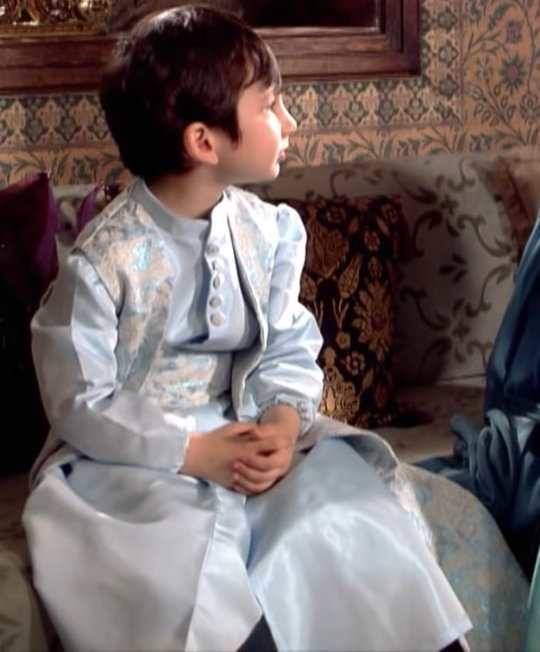
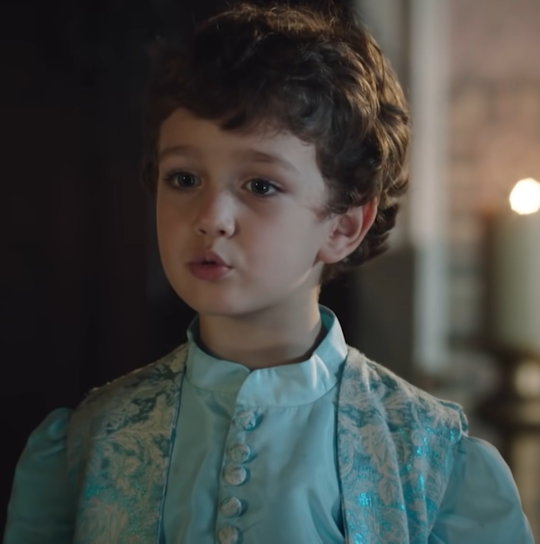


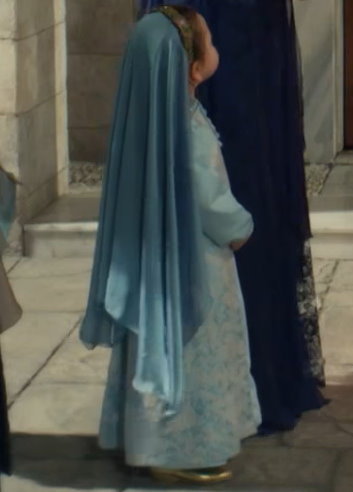
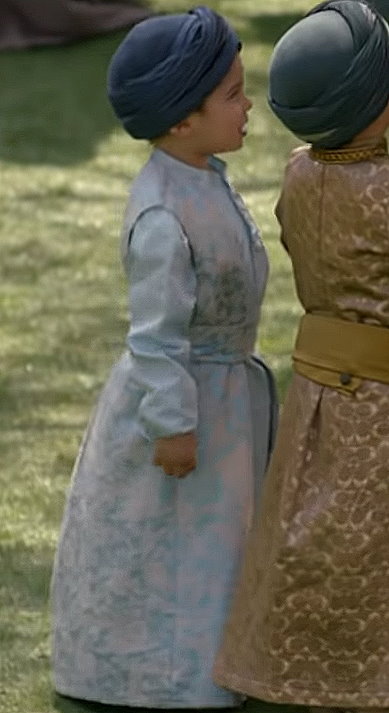
This blue and silver kaftan was first worn by Şehzade Mehmed in the seventeenth episode of the first season of Magnificent Century. It is worn again by Şehzade Bayezid in the twenty-ninth episode of the second season. The kaftan is also briefly seen on an unnamed guest in the thirty-sixth episode of the third season. The fourth season used it twice, first on Şehzade Orhan in the fifth episode and then on Ayşe Sultan in the thirty-first episode.
The kaftan also appeared on Şehzade Süleyman in the twenty-second episode of the second season of Magnificent Century: Kösem.
#Muhteşem Yüzyıl#Muhteşem Yüzyıl: Kösem#Magnificent Century#Magnificent Century Kösem#Magnificent Century Kosem#period drama#costume drama#historical drama#Şehzade Mehmed#Sehzade Mehmed#Şehzade Mehmed (Son of Hürrem)#Şehzade Bayezid#Sehzade Bayezid#Şehzade Bayezid (Son of Hürrem)#Unnamed Istanbul Citizens#Şehzade Orhan#Sehzade Orhan#Şehzade Orhan (Son of Şehzade Bayezid)#Ayşe Sultan#Ayşe Sultan (Daughter of Şehzade Bayezid)#Ayse Sultan#Şehzade Süleyman#Sehzade Suleyman#Şehzade Süleyman (Son of Farya)#reused costumes#recycled costumes
13 notes
·
View notes
Text





This dark blue coat with a brown fur collar was first worn by Sultanzade Osman in the twenty-sixth episode of the second season of Magnificent Century. It is worn again twice in the fourth season, first by Şehzade Orhan in the thirteenth episode and then by Şehzade Abdullah in the eighteenth episode.
The coat was also used twice on Şehzade Osman (later Sultan Osman II) and Şehzade Ibrahim (later Sultan Ibrahim) in the fifteen and twenty-first episodes of first season of Magnificent Century: Kösem.
#Muhteşem Yüzyıl#Muhteşem Yüzyıl: Kösem#Magnificent Century Kösem#Magnificent Century#Magnificent Century Kosem#period drama#costume drama#historical drama#Sultanzade Osman#Sultanzade Osman (Son of Hatice)#Şehzade Orhan#Sehzade Orhan#Şehzade Orhan (Son of Şehzade Bayezid)#Şehzade Abdullah#Sehzade Abdullah#Şehzade Osman#Sehzade Osman#Şehzade Osman (Son of Mahfiruze)#Osman II#Şehzade Ibrahim#Sehzade Ibrahim#Şehzade Ibrahim (Son of Kösem)#Ibrahim I#reused costumes#recycled costumes
10 notes
·
View notes
Text



This greyish brown coat was first worn by Şehzade Bayezid's son Orhan in the twenty-fourth episode of the fourth season of Magnificent Century. It was worn again ten episodes later by Orhan's younger brother Şehzade Osman.
The coat can be seen again on an unnamed boy talking to Matrakçı Nasuh in the seventh episode of the second season of Tozkoparan İskender.
#Muhteşem Yüzyıl#Magnificent Century#Tozkoparan İskender#period drama#costume drama#historical drama#Şehzade Orhan#Sehzade Orhan#Şehzade Orhan (Son of Şehzade Bayezid)#Şehzade Osman#Sehzade Osman#Şehzade Osman (Son of Şehzade Bayezid)#Unnamed Istanbul Citizens#reused costumes#recycled costumes
5 notes
·
View notes
Photo
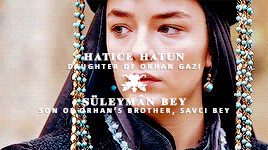


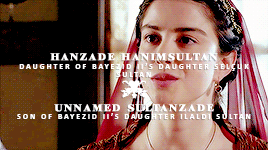

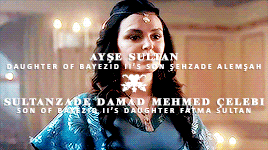
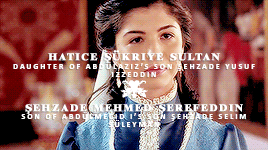
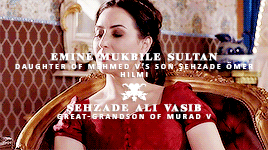
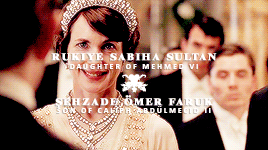

Ottoman princesses who made intra-dynastic marriages -- requested by anon
#history#historyedit#ottoman history#hatice hatun daughter of orhan gazi#bayezid ii#mehmed ii#rukiye sabiha sultan daughter of mehmed vi#abdulaziz#mehmed v#murad v#sehzade omer hilmi son of mehmed v#sehzade omer faruk son of abdulmecid ii
199 notes
·
View notes
Note
Ibrahim I's + harem and children
Consorts:
Haseki Turhan Hatice Sultan later Valide Sultan (?? - 4.8.1683): mother of Mehmed IV and maybe of Fatma Sultan and Atike Sultan as well, she was educated in the palace of Ibrahim’s sister Atike and then gifted to Kösem, to whom she was in service before being presented to the sultan. Probably Russian, Tavernier said in 1668 that she was Circassian instead. She was the last regent of the Ottoman Empire.
Haseki Hatice Muazzez Sultan (?? - 12.9.1687): Ibrahim’s second haseki and mother of the future Ahmed II. Nationality, place and date of birth are unknown. The earliest document that mentions her is dated 9 August 1642, and it is an order of Ibrahim to bring furniture from another mansion for her rooms in the harem. It is not known if she had other children. She never became Valide Sultan as she died in 1687, four years before her son became sultan.
Haseki Saliha Dilaşub Sultan later Valide Sultan (?? - 3.1.1690): origins unknown, she was Ibrahim’s third haseki sultan even though, according to Sakaoğlu, she was the first concubine to be presented to the new sultan. Mother of Süleyman II. She is called Aşübe Sultan in a palace document about some of her jewels. Her country of origin and ethnicity is unknown. Her stipend was higher than the other hasekis’, 1,300 aspers a day, throughout Ibrahim’s reign. It is not known if she had other children.
Haseki Ayşe Sultan: she was first mentioned in a palace document dated January 1645, where it is ordered to prepare the rooms for “the new haseki Ayşe Sultan”. She must have been the fourth haseki. It unknown whether she had children or not.
Haseki Mahienver Sultan: she is mentioned for the first time in a palace document dated 2 May 1646, where che is called “Fifth Haseki Mahienver Sultan”. It is unknown whether she had children or not.
Haseki Saçbağlı Sultan: she is mentioned as recipient of the treasury of Egypt in an undated document. She is traditionally considered the sixth haseki. It is unknown whether she had children or not.
Haseki Şivekâr Sultan (? - 1693): seventh haseki, she was allegedly the largest woman in the empire, weighing 150 kg. Armenian, she was Ibrahim’s true favourite for some time and even influenced the politics of the empire. It is not known whether she had children or not.
Haseki Hümaşah Sultan: eighth haseki, she is sometimes called telli haseki or simply haseki sultan, as she was the sultan’s wedded wife. She entered the harem only in 1647 but Ibrahim fell in love with her immediately and married her in a lavish ceremony. She received the palace of Ibrahim Paşa as a wedding gift, while Kosem’s daughter Ayşe, Fatma and Hanzade and Murad IV’s daughter Kaya Ismihan were ordered by the sultan to serve her. Hümaşah was mother to Sehzade Orhan, who died in infancy six months after Ibrahim’s execution.
Hubyar Hatun: wife of İbrahim Ağa, brother of Grand Vizier Ahmed Paşa, she took Ibrahim’s fancy for a while. Uluçay, on the other hand, believes she was a servant in the harem.
Şekerpare Hatun (? - 1649?): thought to be a harem servant by Naime, she was probably the High Treasurer of the harem. She held great influence over Ibrahim for a time and, together with Hubyar and Yahudi Harun, she used to take bribes in exchange for favours. Two months before Ibrahim’s dethronement, her wealth was confiscated and she was exiled to Egypt. There, according to Evliya Çelebi, she married Kara Musa Paşa. In Tarih-i Gılmani, it is said that matters of state were left to Cinci Hoca and Şekerpare Kadın, who caused great ruin in the empire.
Zafire Hatun: Georgian concubine, she became pregnant by Ibrahim during Murad IV’s reign, so Kösem Sultan gave her to the Chief Black Eunuch Sünbül Ağa so that he drowned her in the sea. Instead, the eunuch took her to his home where she had a son, whom she named Osman. The baby became known in Istanbul as “the bastard of the Chief Black Eunuch” and when Kösem Sultan found out, she exiled them all. On the route to Egypt, they were captured at sea and taken to Malta, where the child was declared an Ottoman Prince. Later on, he converted to Christianity and became a priest known as “Padre Ottomano” (in English: Father Ottoman). According to the Venetian ambassador who related this story, the tensions between the Ottoman government and the Venetians in 1645 were caused by this incident. It is not known what happened to Zafire.
Sakızula: shown by Alderson as one of Ibrahim’s consorts.
Hezarpare Ahmed Paşa’s wife: one of Ibrahim’s passing fancies, she was given Princess Beyhan Sultan to raise. According to Alderson, Hezarpare Ahmed Paşa was given the little princess as a wife in return.
daughter of Şeyhülislam Mu'id Ahmed Efendi: according to A. L. Castellan, Ibrahim wanted her but her father opposed it so the sultan had her kidnapped from the baths and later sent her back home.
Children:
Unnamed Princess (1640 - ?): she married Baki Bey, son of Grand Vizier Hezarpare Ahmed Paşa from his previous wife.
Mehmed IV (2.1.1642 - 6.1.1693): son of Turhan Hatice, 19th Ottoman Sultan
Süleyman II (15.4.1642 - 22.6.1691): son of Saliha Dilaşüb, 20th Ottoman Sultan
Fatma Sultan (9.1642 - 1657): maybe daughter of Turhan Hatice. She married in 1645 Musahip (Silahdar) Yusuf Paşa, who was executed by Ibrahim himself on 22 January 1646. A month later, her father married her to Musahib Fazlı Paşa, whom he removed from Istanbul a couple of months later. She died in 1657 and was buried in the Yeni Valide Mosque.
Gevherhan Sultan (1642 - 27.10.1694): she married Cafer Paşa on 23 November 1646. According to Alderson and Süreyya, she was married to Çavuşzade Mehmed Paşa instead until 1681. In 1692, she married Helvacı Yusuf Paşa.
Ahmed II (25.2.1643 - 6.2.1695): son of Hatice Muazzez, 21st Ottoman Sultan
Şehzade Murad (4.1643 - 1.1644)
Şehzade Selim (19.3.1644 - 9.1669)
Şehzade Osman (8.1644 - died young)
Beyhan Sultan (1645 - 15.9.1700): she was married to Küçük Hasan Paşa in 1646 but her husband died the following year. On 16 September 1647 she married Grand Vizier Hezarpare Şehri Ahmed Paşa. He was executed on 7 August 1648 and Beyhan became a widow again. She later married Uzun İbrahim Paşa, but he died in 1683. In 1689 Bıyıklı Mustafa Paşa, who died in 1699. Beyhan Sultan died on 15 September 1700 and was buried in Süleyman the Magnificent’s tomb.
Şehzade Bayezid (1.5.1646 - 8.1647)
Şehzade Cihangir (14.12.1646 - 1.12.1648)
Ayşe Sultan (around 1646 - ?): she married İbşir Mustafa Paşa in 1655 but her husband was executed in the same year. Nothing else is known about her.
Şehzade Orhan (9.1648 - 1.1650): son of Hümaşah. Uluçay does not give a date of birth but says that the little prince died 6 months after Ibrahim’s execution.
Atike Sultan (? - ?): possibly daughter of Turhan Hatice, as it is said she was Mehmed IV’s own sister. She married Sarı Kenan Paşa in 1648 and, when her husband was executed in 1659, she married Anatolian Inspector Mostarlı İsmail Paşa in the same year. She died at a young age in the reign of her brother.
Kaya Sultan (? - ?): she married Haydarağazade Mehmed Paşa in 1649, who was executed in 1661. date of death and burial are unknown.
Ümmügülsüm Sultan (? - 1654?): she married Mirahur Abaza Ahmed Paşa in 1653 but died shortly after.
Unnamed Princess (? - ?): she was engaged to Kuloğlu Mustafa Paşa but he did not accept the marriage (he would marry Mehmed IV’s daughter Hatice in 1675), so she married Cerrah Kasım Paşa instead, in January 1666.
sources:
A. D. Alderson - The Structure of the Ottoman Dynasty
Leslie Peirce - The Imperial Harem: Women and Sovereignty in the Ottoman Empire
Necdet Sakaoğlu - Bu Mülkün Kadın Sultanları: Valide Sultanlar, Hatunlar, Hasekiler, Kadınefendiler, Sultanefendiler
M. Çağatay Uluçay - Padişahların Kadınları ve Kızları
#anon#ask post#ask: ottoman history#*consortsandchildren#ibrahim i#turhan hatice sultan#saliha dilasub sultan#haseki hatice muazzez sultan#haseki ayse sultan#haseki mahienver sultan#haseki sacbagli sultan#haseki sivekar sultan#haseki humasah sultan#hubyar hatun#sekerpare hatun#zafire hatun#unnamed daughters of ibrahim i#mehmed iv#suleyman ii#ahmed ii#fatma sultan daughter of ibrahim i#gevherhan sultan daughter of ibrahim i#beyhan sultan daughter of ibrahim i#ayse sultan daughter of ibrahim i#atike sultan daughter of ibrahim i#kaya sultan daughter of ibrahim i#ummugulsum sultan daughter of ibrahim i
51 notes
·
View notes